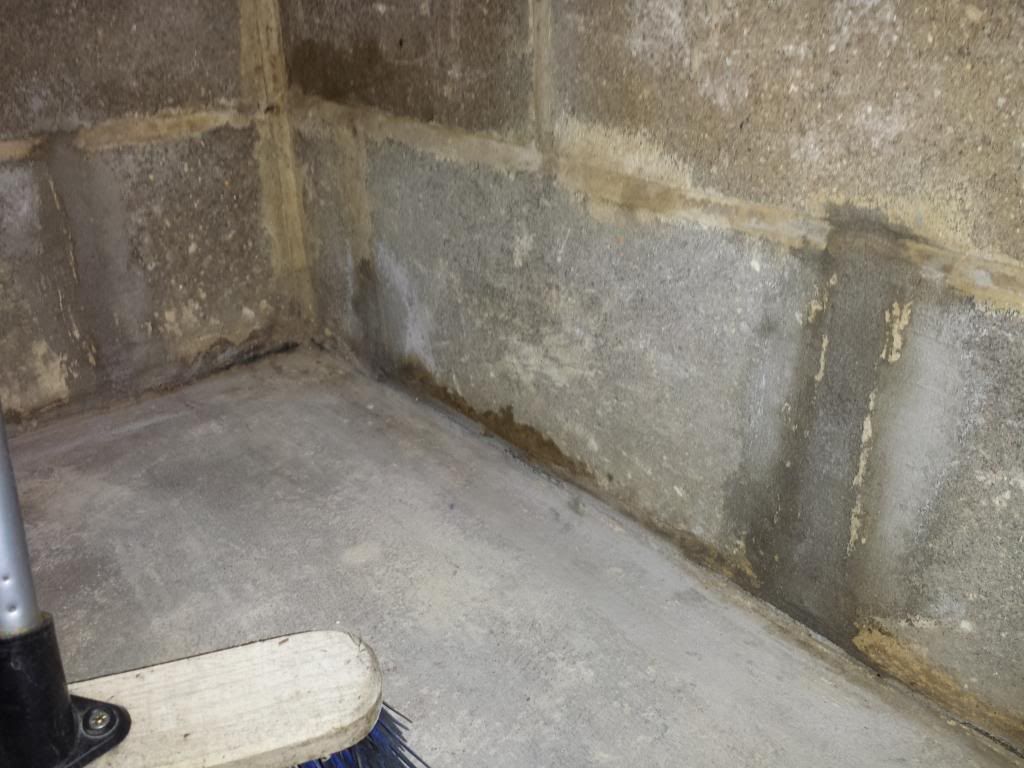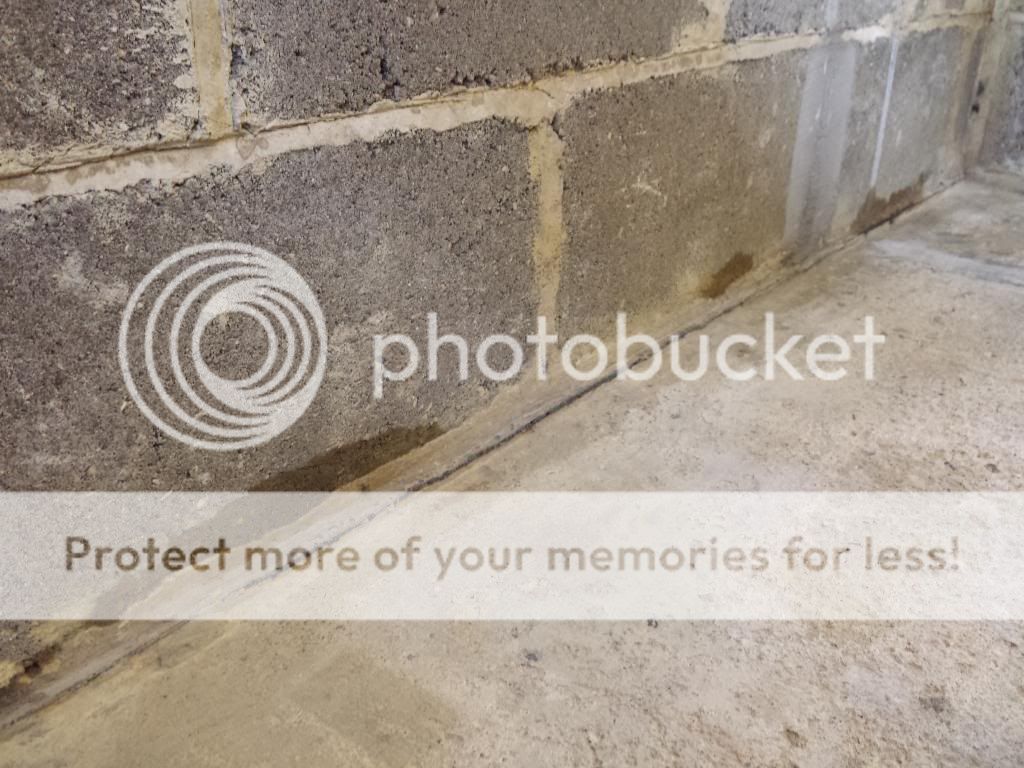Recently moved home and there's a nice hobby/workshop outbuilding in the garden. It's a single block construction on a concrete base. Definitely has some damp issues as it had a very damp musty smell.
I pulled the pinboard wall covering off in one half of the building to find some nasty cracks in the block wall where one end of the building has obviously settled. I have filled those cracks with new mortar and I chiselled out and replaced some mortar on the lower levels which was cracked. At the other end of the building there is some serious damp in one corner - I believe the cause of this was rubble/soil piled against the side of the building well above the DPC which I have now removed.

Everything dried out in the last few days and I hoped that the damp issues would be resolved, however this morning I checked it out (given that there was a lot of wind and rain last night) to find a few damp patches directly above the DPC. Looking outside that line of mortar was quite damp and not in the best condition. I gave it a little rub with a stiff brush to see how crumbly the mortar is (with a view to possibly re-pointing it) but in places the DPM sees very brittle and is crumbly meaning I can't easily replace the mortar without risk of cracking / damaging the DPM.

I'm not sure that the DPM in itself is letting damp rise it seems more likely that with heavy driving rain water is running down the wall and sitting on top of the DPM then seeping in through the mortar.



My aim was to stop any damp penetrating so that I can lay some self-levelling floor compound. It would seem silly to do that without ensuring that no damp will get in which will ultimately cause further damage. I plan to put down some liquid damp proofing (http://www.wickes.co.uk/invt/241218) before the self levelling compound as I don't know if the concrete base has been properly damp proofed. This would also be applied 3-4" up the wall covering the lower level of mortar and joining with the existing DPC in the wall to seal off the floor from any damp penetrating the wall. I also plan to wait until the summer and chisel out/replace any cracked mortar higher up the wall followed by a coat of exterior paint or seal (http://www.wickes.co.uk/invt/226494).
So my question is - does anyone in the know about these things think I have made the correct diagnosis and am taking the correct approach to dealing with it? This isn't in the home, just a man-cave but I want to ensure I do things properly to stop the issue from reoccurring allowing me to enjoy using the space for years to come. One concern I have is that if the DPM is breaking down or the mortar allowing water to seep in and I lay my liquid DPM and floor levelling compound internally then I'll no longer be able to apply a DPM creme treatment later on as the lower line of mortar will be covered by the new floor. Can this be applied from outside? I've read mixed reviews on the effectiveness of these cremes anyway but I don't know what other options there could be for repairing a duff membrane?
I pulled the pinboard wall covering off in one half of the building to find some nasty cracks in the block wall where one end of the building has obviously settled. I have filled those cracks with new mortar and I chiselled out and replaced some mortar on the lower levels which was cracked. At the other end of the building there is some serious damp in one corner - I believe the cause of this was rubble/soil piled against the side of the building well above the DPC which I have now removed.

Everything dried out in the last few days and I hoped that the damp issues would be resolved, however this morning I checked it out (given that there was a lot of wind and rain last night) to find a few damp patches directly above the DPC. Looking outside that line of mortar was quite damp and not in the best condition. I gave it a little rub with a stiff brush to see how crumbly the mortar is (with a view to possibly re-pointing it) but in places the DPM sees very brittle and is crumbly meaning I can't easily replace the mortar without risk of cracking / damaging the DPM.

I'm not sure that the DPM in itself is letting damp rise it seems more likely that with heavy driving rain water is running down the wall and sitting on top of the DPM then seeping in through the mortar.



My aim was to stop any damp penetrating so that I can lay some self-levelling floor compound. It would seem silly to do that without ensuring that no damp will get in which will ultimately cause further damage. I plan to put down some liquid damp proofing (http://www.wickes.co.uk/invt/241218) before the self levelling compound as I don't know if the concrete base has been properly damp proofed. This would also be applied 3-4" up the wall covering the lower level of mortar and joining with the existing DPC in the wall to seal off the floor from any damp penetrating the wall. I also plan to wait until the summer and chisel out/replace any cracked mortar higher up the wall followed by a coat of exterior paint or seal (http://www.wickes.co.uk/invt/226494).
So my question is - does anyone in the know about these things think I have made the correct diagnosis and am taking the correct approach to dealing with it? This isn't in the home, just a man-cave but I want to ensure I do things properly to stop the issue from reoccurring allowing me to enjoy using the space for years to come. One concern I have is that if the DPM is breaking down or the mortar allowing water to seep in and I lay my liquid DPM and floor levelling compound internally then I'll no longer be able to apply a DPM creme treatment later on as the lower line of mortar will be covered by the new floor. Can this be applied from outside? I've read mixed reviews on the effectiveness of these cremes anyway but I don't know what other options there could be for repairing a duff membrane?

